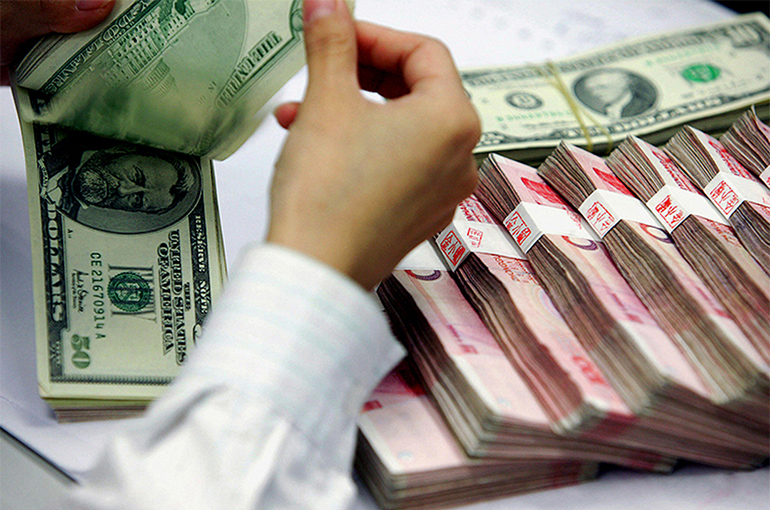 Chinese Yuan Holds Steady Versus Dollar, as Currency Basket Index Is Set to Slide Further, Analysts Predict
Chinese Yuan Holds Steady Versus Dollar, as Currency Basket Index Is Set to Slide Further, Analysts Predict(Yicai) April 17 -- A weaker US dollar has eased pressure on the Chinese yuan against the greenback, but analysts expect the yuan to continue a moderate decline against a basket of other major currencies, particularly the euro and Japanese yen, as reflected by the CFETS RMB Index, helping to underpin export competitiveness.
The CFETS RMB Index, introduced by the China Foreign Exchange Trade System in 2015, is a trade-weighted index that includes the US dollar, euro, yen, Canadian dollar, and other key currencies. The index has fallen 5 percent since the start of the year, signaling moderate pressure on the yuan, which has also slipped against the euro and the yen.
There is a greater chance of the CFETS RMB Index continuing to soften, rather than the yuan weakening against the US dollar, especially given the broader decline in the dollar, said Sun Lu, North Asia and China rates and foreign exchange strategist at Goldman Sachs.
On April 8, the official central parity rate of the yuan versus the dollar breached the psychological level of 7.2 for the first time in years, fixing at 7.2038, 58 basis points lower than the previous trading day. The offshore yuan also briefly weakened to around 7.35 intraday. Despite considerable depreciation pressure over the past year, the midpoint had not broken through the 7.2 level.
As of today, the offshore yuan has rebounded to around 7.3, following last week’s sharp decline in the US Dollar Index. The drop came amid growing expectations of a US recession, easing credit conditions, and a broad sell-off in US equities spurred by big tariff hikes on Chinese goods.
Recession fears and concerns over US debt are key drivers of the dollar’s recent weakness, Jerry Chen, a senior analyst at Gain Capital Holdings, told Yicai. In the context of shifting global trade patterns and adjustments to the US balance of payments, global investors may cut their holdings of dollar-denominated assets, or even divest entirely.
As capital flows out of these assets, the euro, yen, and gold have emerged as major beneficiaries, with exchange rates reaching three-year highs, Chen added.
While the yuan is expected to stabilize against the greenback, analysts say further softening of the CFETS RMB Index could be constructive, allowing for a gradual release of depreciation pressures against the currencies of China’s trading partners.
China's gross domestic product grew 5.4 percent year over year in the first quarter, surpassing market expectations, according to data released by the National Bureau of Statistics yesterday. Key drivers included front-loaded exports, government subsidies for household appliances, and resilient retail consumption. Analysts anticipate that further stimulus measures may follow.
Looking ahead, major financial institutions predict that reductions in the reserve requirement ratio -- the percentage of deposits a financial institution must hold in reserve as cash -- are more likely than interest rate cuts, given concerns about exchange rate stability. Moderate monetary easing remains necessary, they added, especially in coordination with intensifying fiscal policy efforts.
In this context, the risk of a disorderly yuan depreciation remains low, Morgan Stanley told Yicai.
Editor: Emmi Laine